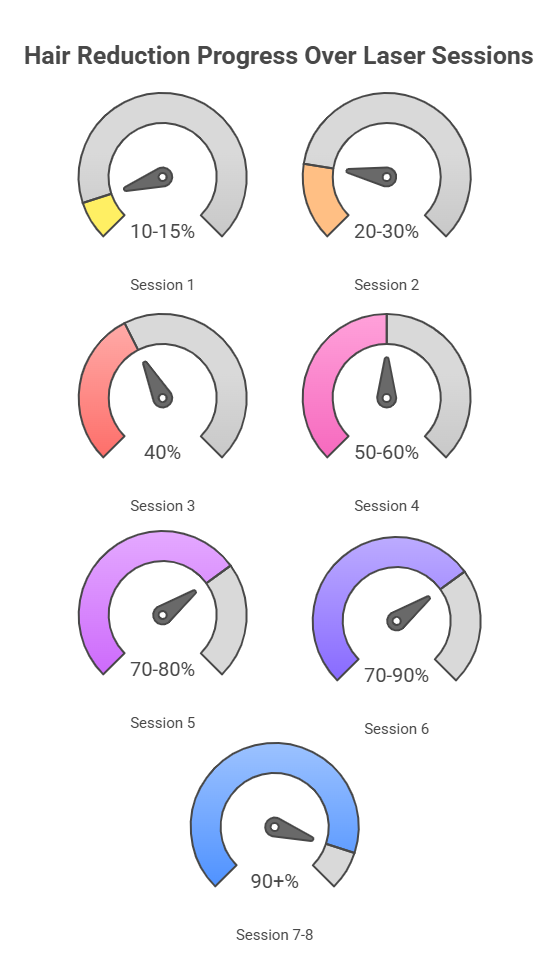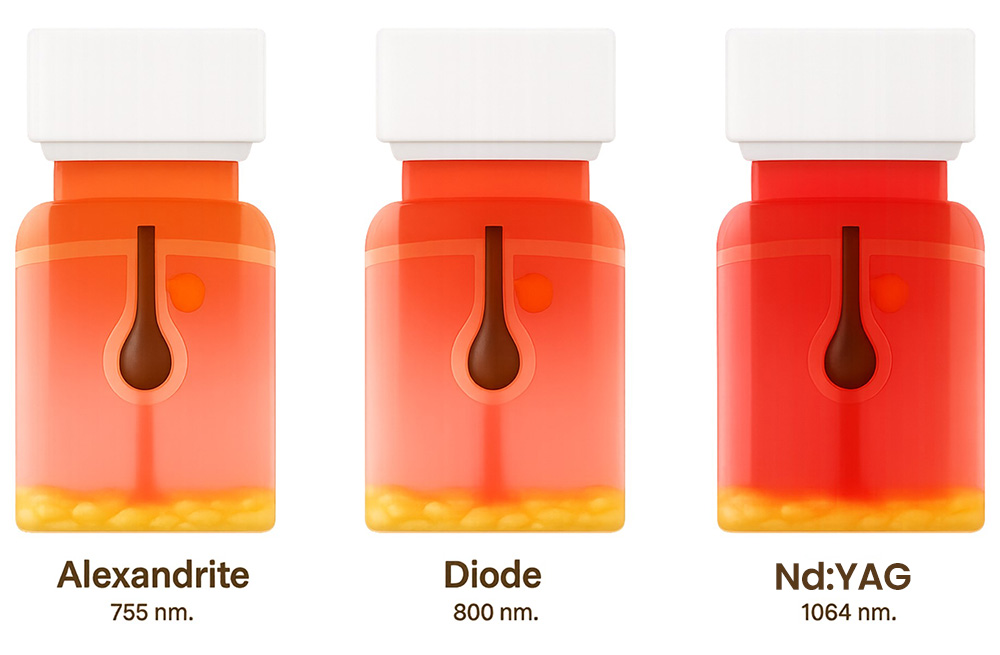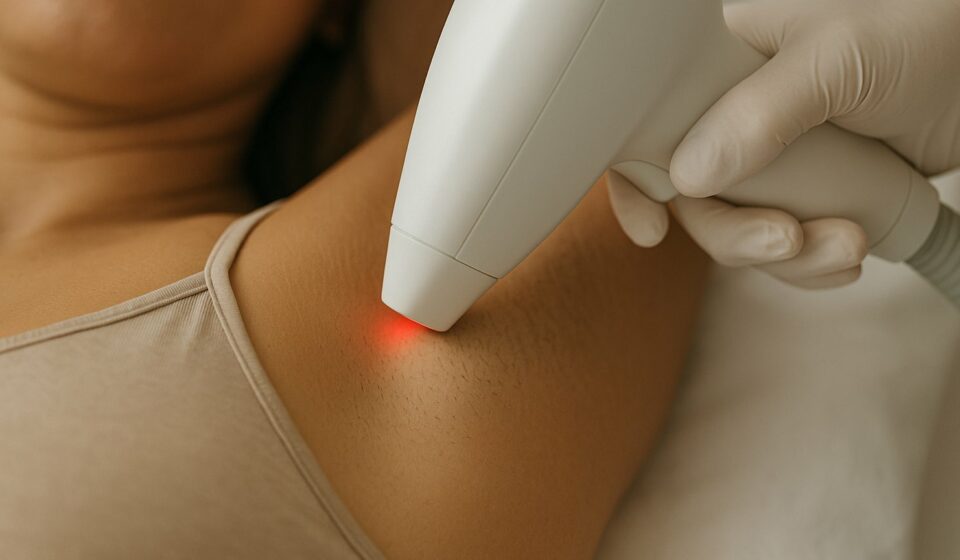Laser hair removal is highly effective for long term hair reduction when the right wavelength and parameters are matched to the client, producing smoother skin with far slower regrowth after a short course of sessions. The best results come from professional devices, steady spacing, and a realistic plan.
Table Of Content
What “effective” looks like in real life
Lasers target melanin in the hair shaft, convert light to heat, then disable the follicle’s growth structures. Because hairs cycle, only those in the active phase are hit at each visit, which is why a series is needed. Clients typically see a visible reduction in density and speed, with many reporting long gaps between shaves after finishing their course. A helpful overview of the method and common after effects appears on Wikipedia.
01. Results by stage
| Milestone | What most clients notice | Why it happens |
|---|---|---|
| After 1 to 2 sessions | Lighter shedding, slight slowing | First pass hits a fraction of follicles in anagen |
| After 3 to 4 sessions | Patchier regrowth, finer texture | More growth cycles have been targeted |
| After 6 sessions | Marked reduction, low stubble burden | Most active follicles have been treated at least once |
| Maintenance | Quick top ups hold the result | Deals with late cycling or hormone stimulated hairs |

How many sessions for strong effectiveness
Most areas need six to eight sessions. Some clients, especially where hair is very fine or hormones are active, book a couple more. Professional devices let clinics space visits four to six weeks for facial areas and six to eight weeks for body areas. With that cadence, you chip away at each growth wave and build durable reduction. Demand is robust in Britain, with laser hair removal topping treatment interest in 2024 according to Rare Consulting.
What drives better or weaker outcomes
- Hair and skin contrast: darker, coarser hair on lighter skin responds briskly. Very fair or grey hair contains less target pigment, so response is softer.
- Wavelength choice: Alexandrite 755, Diode 808, and Nd:YAG 1064 have different absorption and depth. Matching the right one to the client improves safety and results.
- Hormones: PCOS, pregnancy, peri menopause, or certain medicines can recruit new follicles or speed cycles. That changes maintenance timing, not the core effectiveness.
- Device and cooling: stable energy and strong cooling allow effective settings, less discomfort, and steadier progress.
- Consistency: keeping to the schedule and shaving only between visits makes a genuine difference.

02. Area by area effectiveness
| Area | Typical sessions | Client feedback trend |
|---|---|---|
| Underarms | 6 to 8 | Fast visible change, stubble burden drops quickly |
| Bikini | 6 to 8 | Strong reduction with excellent comfort on modern cooling |
| Legs | 6 to 8 | Broad thinning, long gaps between top ups |
| Face | 6 to 10 | Clear reduction; maintenance depends on hormone patterns |
| Back or chest | 6 to 10 | Density falls steadily; top ups keep neatness |
The tech that consistently delivers
Three wavelength platforms let clinics treat every skin tone safely and effectively, then fine tune settings for stubborn patches. That is why many providers choose our systems:
- Nu TriLaze Plus: Alexandrite, Diode, Nd:YAG in one, with a built in skin analyser and HD detection to personalise settings. Nu TriLaze Plus
- Nu eRays Plus: precise control from the handpiece and excellent cooling for comfort and speed. Nu eRays Plus
- Nu TriLaze Lite: compact, flexible, and low running cost, ideal for multi room setups or mobile work. Nu TriLaze Lite
Compare all three here: laser hair removal machines. Prefer a walk through. Book a demo or request details including finance.
03. Make your results even better
- Shave only between visits: do not wax or epilate during a course, the root must be present.
- Mind the sun: avoid tanning two weeks before and after, use SPF on exposed skin.
- Be honest at consultation: disclose medicines, hormone history, and skin changes to tailor settings.
- Ask about wavelength choice: darker tones often suit Nd:YAG 1064 for safety and steady gains.
Curious about durability once the course is finished. Read how long laser hair removal lasts. For comfort tips, see how painful is laser hair removal. If you treat deeper tones, our guide for Afro Caribbean skin covers settings and spacing.
Dr Majid Zarandouz
Majid holds a PhD in organic chemistry and has been working with laser systems for decades. His career began in the mid-1990s, when he started researching and developing laser-based technologies for medical and cosmetic applications. Over the years, he has combined scientific expertise with practical engineering to design machines that are effective, durable, and straightforward to use in real clinic settings. As director of the British Institute of Lasers, Majid continues to focus on producing equipment that meets professional standards while remaining accessible to businesses of all sizes.

